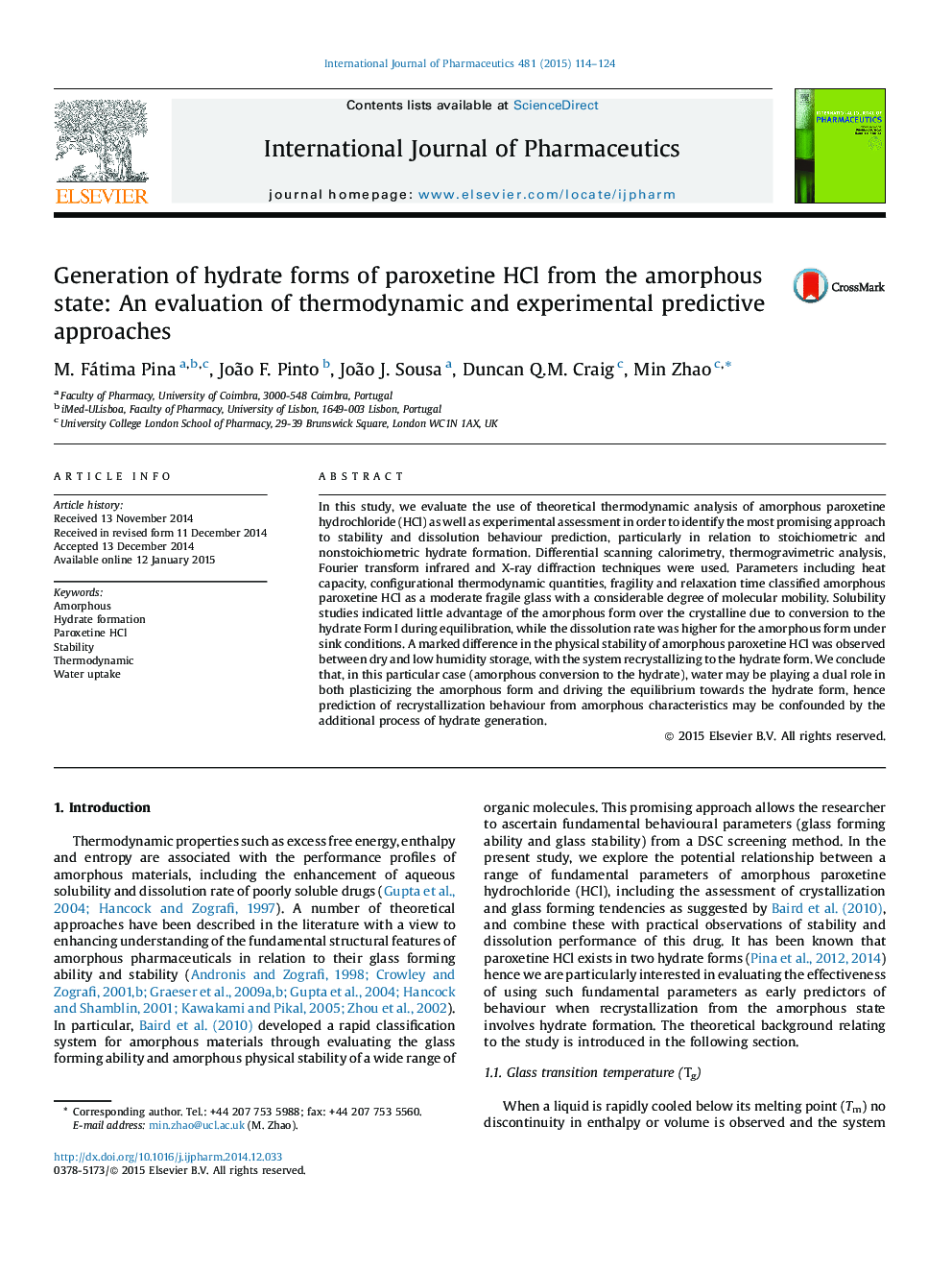| Article ID | Journal | Published Year | Pages | File Type |
|---|---|---|---|---|
| 2501521 | International Journal of Pharmaceutics | 2015 | 11 Pages |
In this study, we evaluate the use of theoretical thermodynamic analysis of amorphous paroxetine hydrochloride (HCl) as well as experimental assessment in order to identify the most promising approach to stability and dissolution behaviour prediction, particularly in relation to stoichiometric and nonstoichiometric hydrate formation. Differential scanning calorimetry, thermogravimetric analysis, Fourier transform infrared and X-ray diffraction techniques were used. Parameters including heat capacity, configurational thermodynamic quantities, fragility and relaxation time classified amorphous paroxetine HCl as a moderate fragile glass with a considerable degree of molecular mobility. Solubility studies indicated little advantage of the amorphous form over the crystalline due to conversion to the hydrate Form I during equilibration, while the dissolution rate was higher for the amorphous form under sink conditions. A marked difference in the physical stability of amorphous paroxetine HCl was observed between dry and low humidity storage, with the system recrystallizing to the hydrate form. We conclude that, in this particular case (amorphous conversion to the hydrate), water may be playing a dual role in both plasticizing the amorphous form and driving the equilibrium towards the hydrate form, hence prediction of recrystallization behaviour from amorphous characteristics may be confounded by the additional process of hydrate generation.
Graphical abstractFigure optionsDownload full-size imageDownload high-quality image (273 K)Download as PowerPoint slide
